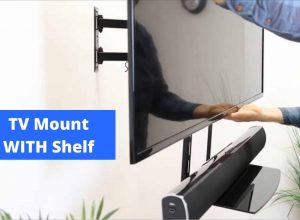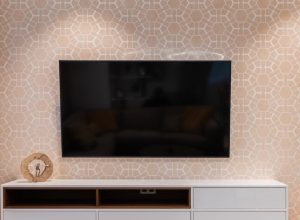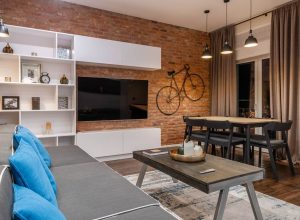As TVs have become bigger and slimmer over the years, mounting them to the wall has become highly popular and common in households.
With that being said, there are a ton of challenges that you must overcome when you wall mount a TV.
One of those challenges is the tilt of your TV and how much you should tilt it, if at all.
Quick summary
In this post, we will discuss what tilted mounts are and how you can use them to provide yourself with the most pleasurable viewing experience possible.
Let’s get into it.
How Much Tilt Should a Wall Mounted TV Have?
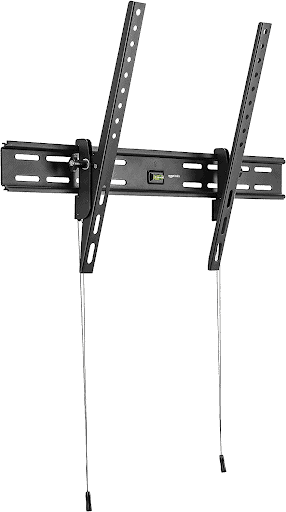
If you have a tilting wall mount, you can use it to tilt your TV’s angle slightly forwards or backward.
How many degrees you can tilt it back or forward will depend on the model and manufacturer of your tilting TV wall mount.
The first thing you need to take into account and think about is the viewing height.
The Viewing Height of Your Wall Mounted TV
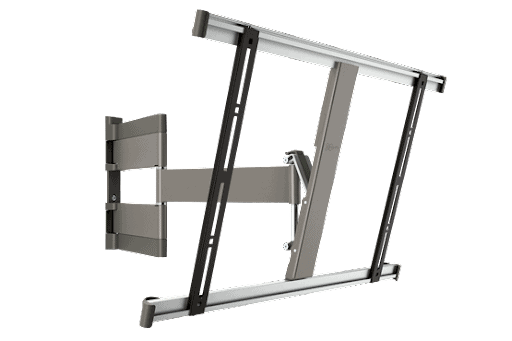
Firstly, you must figure out what height you should place your TV at so that you can watch it comfortably.
Ideally, it’s a rule of thumb that the center of your TV screen must be equal to your eye level.
However, the eye level for everyone isn’t really the same. It can depend on a number of different factors such as your height, your sofa as well as the distance of your seat from the screen.
The best place to start when you want to determine your eye level is to use some measuring tape to get an approximation of it.
For most people, the ideal eye height lies somewhere around 42 inches.
Once you have figured out the height, you can use it to determine approximately where on the wall the center of your TV screen should lie.
Don’t worry too much about being too accurate at this stage. You’re not looking for an exact formula or an exact range.
In most cases, just an approximate range will be more than enough to do the job. Just make sure that you take your measurements carefully so that everything is as it should be.
Viewing Angle
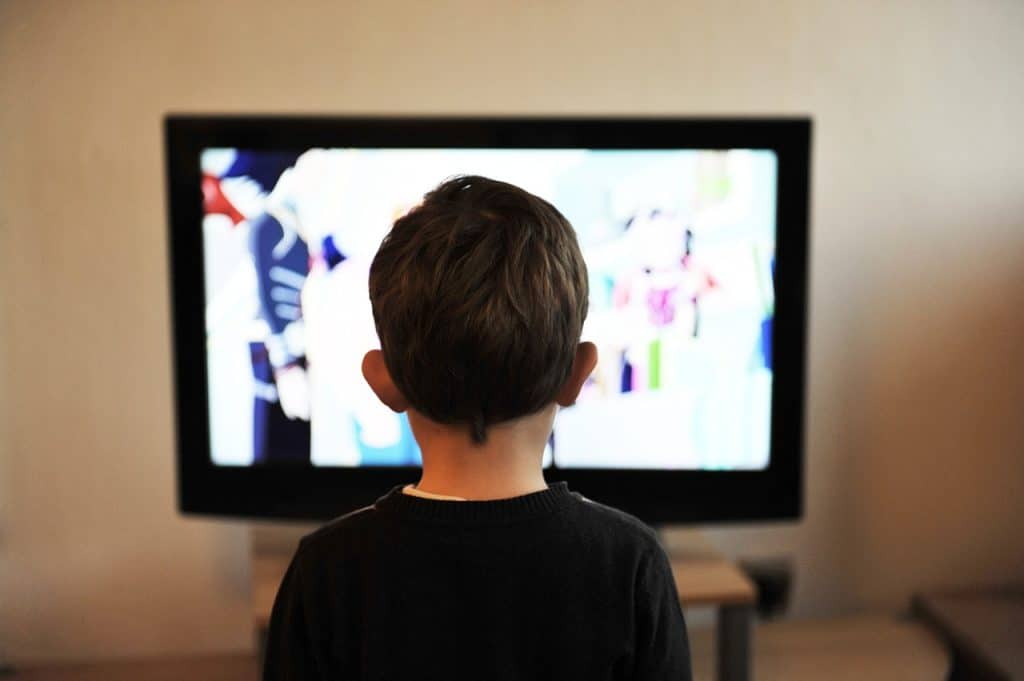
This is where the actual “tilt” part comes in.
The viewing angle of your TV screen is important because if it’s too much or too little, it can cause you to have a terrible viewing experience, possibly along with a neck strain.
According to the Society of Motion Picture and Television Engineers (SMPTE), an angle of 30 degrees or lower is acceptable for viewing television.
If you’re bending your neck more than 30 degrees, then it will cause you to have a much less pleasurable experience and you might end up with a strained neck.
In addition to helping you avoid neck strains, tilting your TV can also help solve another problem: screen glare.
Screen glares can occur if you have a window nearby or any other sort of similar light source.
This external light source can cause the image on your TV to become unclear and too bright when it shines onto it.
You can get rid of this by tilting your TV slightly backward or forward. How much you have to tilt it and in what direction will depend on the level of glare you have on your TV and what direction it’s coming from.
Thus, a tilting TV wall mount can definitely fix the two problems of neck strains and glare for you.
What is a Tilting TV Wall Mount?
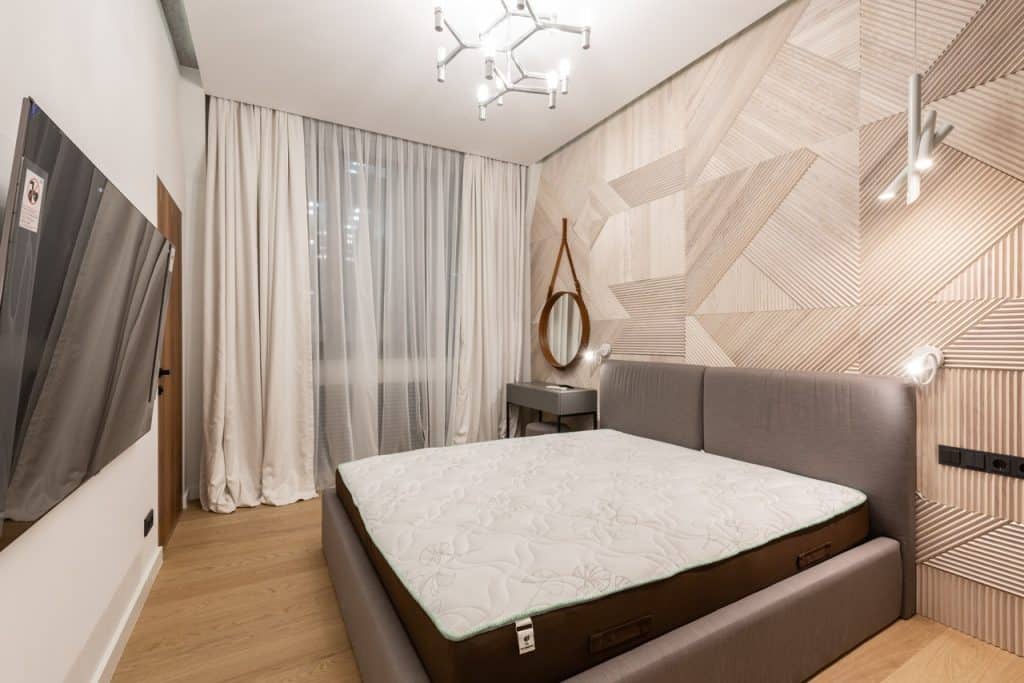
Tilting TV wall mounts are widely available in the market and they are TV mounts that offer a fairly limited range of motion.
You cannot move your TV with it in many ways but you can tilt it backward or forward by certain degrees.
The level of tilting you can achieve with a tilting TV mount will depend on the mount’s model and manufacturer.
Most commonly, you will find mounts that can tilt backward about 5 degrees and forwards about 15 degrees.
However, obviously, there are other models out there that can tilt more or less than that.
A tilting bracket can definitely be highly useful while watching TV since if you end up with glare on your screen, you won’t have to change your viewing position.
All you need to do is adjust the tilt of the TV with your tilting mount. It makes it much easier to find that sweet spot for the best viewing experience.
Disadvantages of a Tilting TV Mount
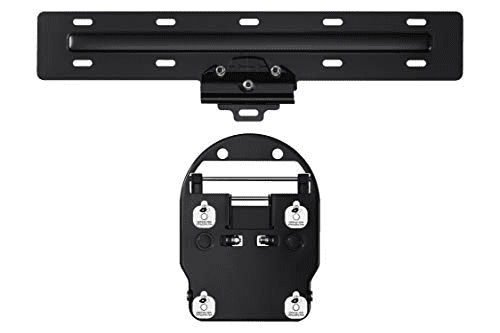
While tilted wall mounts are great for glare and neck strain reduction, they do come with their own set of disadvantages which you must be aware of.
Firstly, they are not flush with the wall. That means that you won’t get the “picture-frame” look with tilted wall mounts as you normally do with regular ones.
Secondly, they are far less dynamic than other types of wall mounts that offer much higher motion options such as full-motion mounts.
Thirdly, you will find that they are a lot harder to install compared to the more common fixed mounts. It might be a little intimidating if you’ve never installed a wall mount before. However, if you follow the instructions of the manufacturer carefully, you should be able to install it properly.
Wrapping Things Up…
We hope you have a better understanding of how much tilt you need when you have a wall-mounted TV.
Tilted wall mounts are great but the same type of tilt settings don’t work with everyone.
What may be suitable for you may not be suitable for someone else. Hence, make sure that you experiment with your wall mounting and the tilt angle.
Eventually, you will find one that works best for you and provides you with the best viewing experience.
Do you have any more questions about tilting mounts? Reach out to us in the comments below
Adam F.
A/V and Home Theater Expert that focuses on providing clear as well as concise reviews for anything and everything Audio Visual. From TV's, TV Mounts, Soundbars, and Wiring, my focus is to provide expertise in everything Audio Visual focused.



